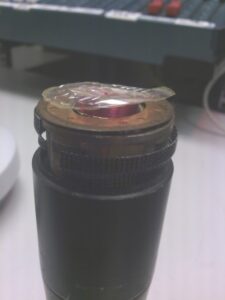I use WordPress at work, it’s the engine behind fr.om.org, transform.om.org and most of the other sites that we run for clients.
I’m in two minds as to whether I like it or not. Some things are great. For users (content authors, the people writing blog posts or static pages), it’s fine. Easy to understand and use. For writing plugins and templates, it’s… Well, kind of messy and ugly, but doable. For instance, rather than have 1 HTML template “base” file, with a block saying, “put posts here, and wrap each one in x,y,z”, you have a header.php which has only the start of all the HTML, and a footer.php which closes it all, and a content.php, a content-post.php, and so on, and you have to keep them all synced up. Also, since it’s designed for running on old PHP, it doesn’t use namespaces or other ways of keeping code clean, so all functions in all plugins and all templates are all global scope, so to avoid bumping in to each other, you have to name all your functions stuff like, “madprofs_teapot_plugin_get_resource() and similar. Then at the same time, WordPress has multiple global functions of its own, some called things like, the_post(), others like wp_get_cached(), (so prefixed with wp_), and others in other styles. Messy.
Still, it gets the job done.
So when I wanted to update and clean up the brummie@sea blog, I thought I’d just stick with blogger. It works, it’s what I already had. But then, accidentally, while trying to update it, I lost the entire design, and putting it back together was this awful mess of Google-XML/HTML confusion, I thought, “you know, stuff it, I’ll just use WordPress.” So I span up a site on the server (in about 2 minutes), pointed the blogger importer at brummieatsea.blogspot.com, let it chug away for a few minutes, and here we are.
I’m just using a very simple built in design for now, (with my own background), but it seems to work. I now don’t have to worry about Google turning off blogger like they did with Reader and GoogleCode, and since I use WordPress at work, I understand what’s going on pretty well.
That all said, we’re now on the ship, trying to settle in. We have a really nice cabin. Jet lag wasn’t fun, especially with the baby, but we’ll get through it. Yesterday Becky drank a big milky drink by accident – we thought it wasn’t cows milk but plant based, and last night and tonight David has been awful – screaming for ages and refusing to be comforted or to sleep lying down in his bed. So that does seem to confirm that maybe it is a lactose intolerance at the moment – hopefully he’s back to normal in a day or so.
Work so far is just cleaning the various venues. We’ve not even begun to start installing new equipment or doing anything really technical. We’ve got the lights out of their bags and air-blasted them all, cleaned many surfaces and TVs and vacuumed and dusted. It’s going alright. Still sooo much to do.
For Becky and David things are a bit odd still, it’s quite odd not having a fixed job to do, not knowing what to do most of the day, not having cornerstone to visit, not really knowing many people yet, and so on.
Anyway, we’re here, the flights weren’t bad at all. We couldn’t check in online due to some weird computer bug, but at the terminal while we were checking in we asked about getting a bassinet for David to sleep in, and they said they could get us one, but the lady recommended us instead to not get one, as he is quite big, and had a seat booked, and instead found us a row of four seats with no one else on the row, so we could make a bed for David there, which gave us all a lot more room. So on the second flight, both mother and baby could actually lie down and get some proper sleep, and arrive not looking like zombies.
I now have this weird mental image, after that last sentence, of a zombie “madonna and child” (very un-)orthodox icon…
That aside, we’re here!





